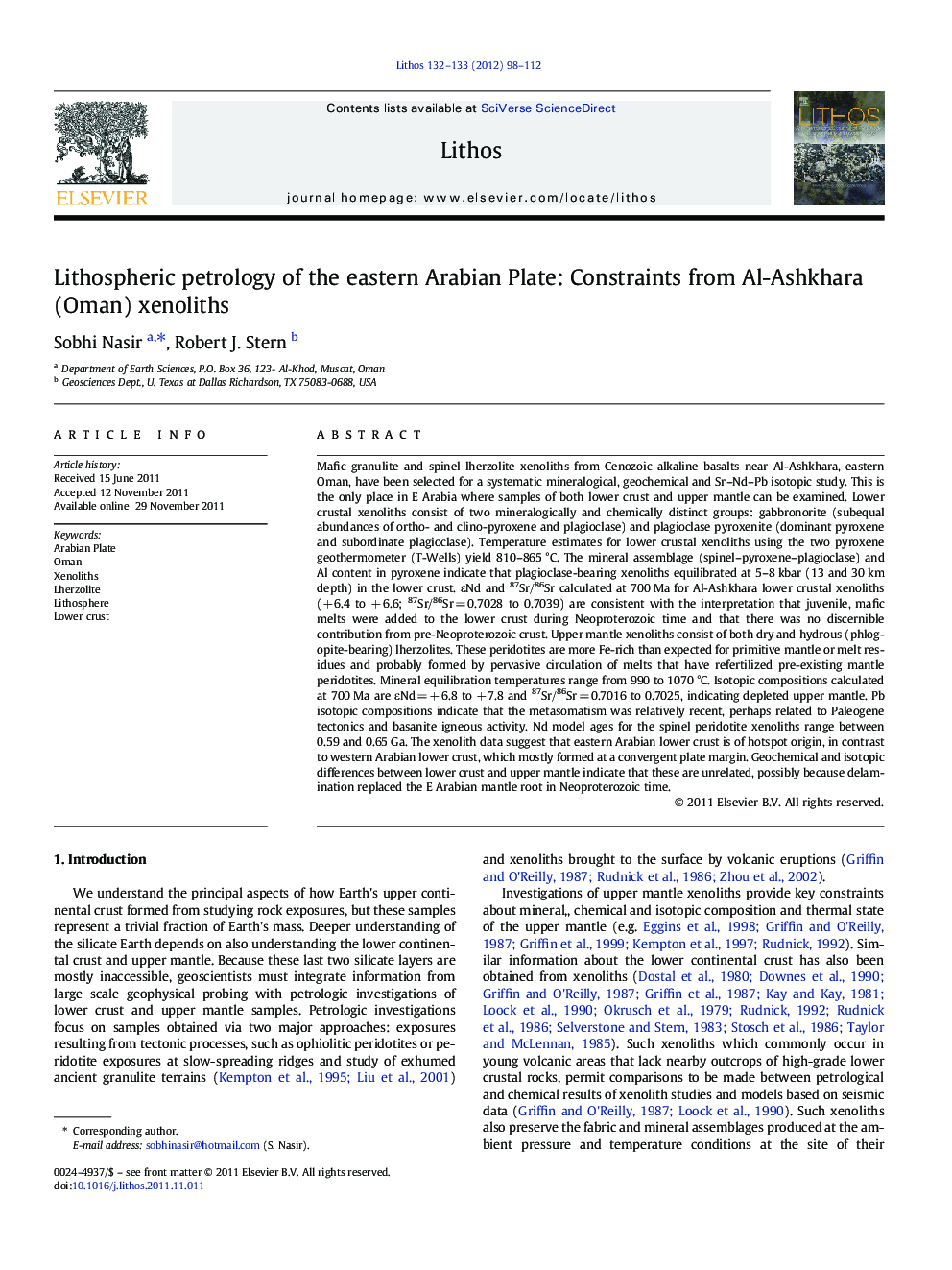| Article ID | Journal | Published Year | Pages | File Type |
|---|---|---|---|---|
| 4716666 | Lithos | 2012 | 15 Pages |
Mafic granulite and spinel lherzolite xenoliths from Cenozoic alkaline basalts near Al-Ashkhara, eastern Oman, have been selected for a systematic mineralogical, geochemical and Sr–Nd–Pb isotopic study. This is the only place in E Arabia where samples of both lower crust and upper mantle can be examined. Lower crustal xenoliths consist of two mineralogically and chemically distinct groups: gabbronorite (subequal abundances of ortho- and clino-pyroxene and plagioclase) and plagioclase pyroxenite (dominant pyroxene and subordinate plagioclase). Temperature estimates for lower crustal xenoliths using the two pyroxene geothermometer (T-Wells) yield 810–865 °C. The mineral assemblage (spinel–pyroxene–plagioclase) and Al content in pyroxene indicate that plagioclase-bearing xenoliths equilibrated at 5–8 kbar (13 and 30 km depth) in the lower crust. εNd and 87Sr/86Sr calculated at 700 Ma for Al-Ashkhara lower crustal xenoliths (+ 6.4 to + 6.6; 87Sr/86Sr = 0.7028 to 0.7039) are consistent with the interpretation that juvenile, mafic melts were added to the lower crust during Neoproterozoic time and that there was no discernible contribution from pre-Neoproterozoic crust. Upper mantle xenoliths consist of both dry and hydrous (phlogopite-bearing) lherzolites. These peridotites are more Fe-rich than expected for primitive mantle or melt residues and probably formed by pervasive circulation of melts that have refertilized pre-existing mantle peridotites. Mineral equilibration temperatures range from 990 to 1070 °C. Isotopic compositions calculated at 700 Ma are εNd = + 6.8 to + 7.8 and 87Sr/86Sr = 0.7016 to 0.7025, indicating depleted upper mantle. Pb isotopic compositions indicate that the metasomatism was relatively recent, perhaps related to Paleogene tectonics and basanite igneous activity. Nd model ages for the spinel peridotite xenoliths range between 0.59 and 0.65 Ga. The xenolith data suggest that eastern Arabian lower crust is of hotspot origin, in contrast to western Arabian lower crust, which mostly formed at a convergent plate margin. Geochemical and isotopic differences between lower crust and upper mantle indicate that these are unrelated, possibly because delamination replaced the E Arabian mantle root in Neoproterozoic time.
► The question addressed here concerns the nature of the lithosphere beneath eastern Arabia. ► The xenolith data of the eastern Arabian lower crust is of hotspot origin in contrast to that of W. Arabia. ► Mantle xenoliths are more Fe-rich than expected for primitive mantle or melt residues. ► Lithospheric composition beneath E. Arabia is different from that of W. Arabia.
